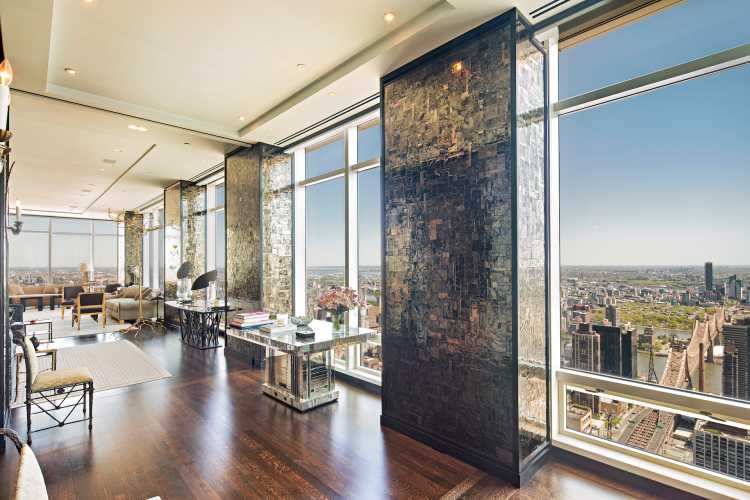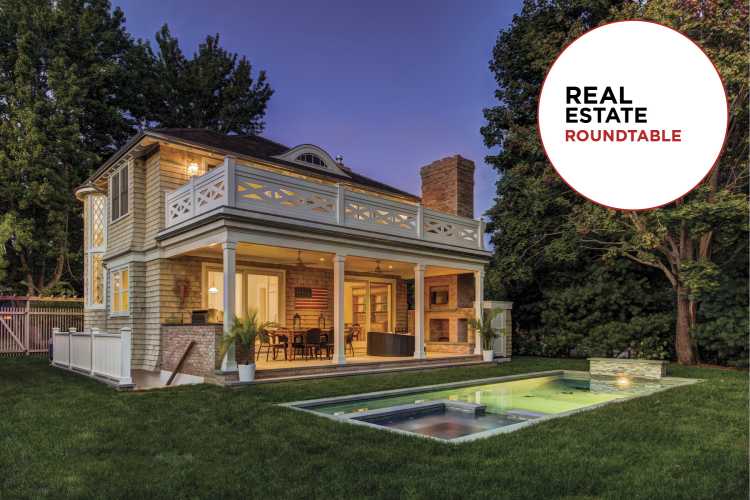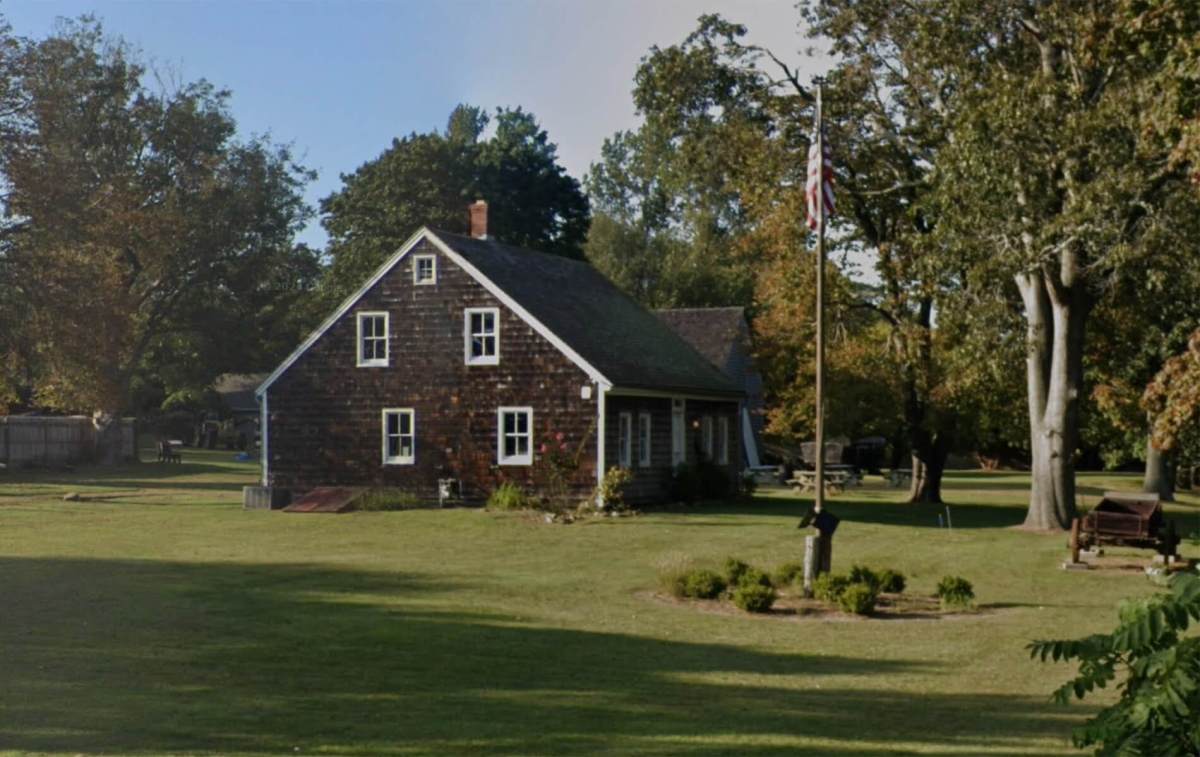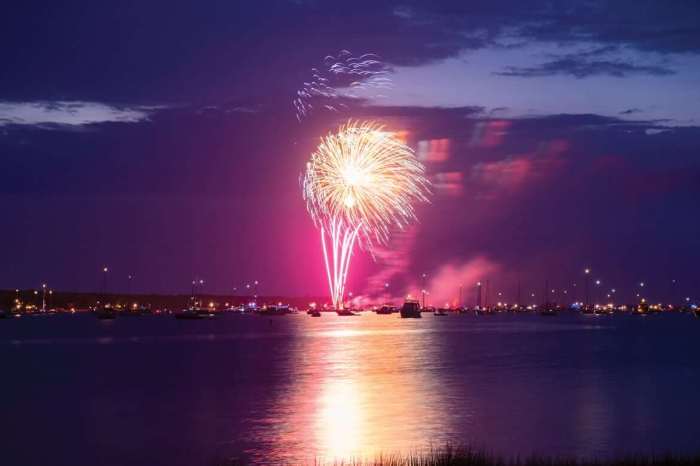“Iconic” is the best word to describe the old house perched by the Atlantic. Just about every photo meant to evoke the Hamptons features Kilkare. It’s closer to the ocean than most, so it seems to float like a lonely boat above the dunes.
Kilkare–the name is a Victorian whimsy, an Irish-sounding word meaning to “kill care”–has stood sentry between the Atlantic Ocean and Georgica Pond since 1877, a landmark for passing ships and beachgoers. It even survived the terrible hurricane of 1938. Many years of scouring sand and sea air have given the exterior a beautiful patina.
Indoors, time has stood still. The simple, old-fashioned furniture and sun-bleached fabrics give the rooms the look of a faded black-and-white photograph, the only color coming from the blue ocean visible through every window, as if the clock stopped ticking decades ago and it’s always summer. A visitor wouldn’t be surprised to see a ghost, and in fact, owner Eleanora Kennedy says that the ghosts of original owners Camilla and Jonathan Edwards were there when she arrived. “They watched to protect the house from the sea. They stayed until we built the sturdy stone revetment under the dune, then they departed happily.”
In 1877 Camilla and Walter Edwards commissioned a shipbuilder to construct Kilkare in Georgica Settlement. This small patch of the Hamptons was founded in the late 1800s by about 20 academics–mostly New Englanders associated with Yale–who wanted a private place to think, read, write and play sports without outside interference. Now called the Georgica Association, the area still has just one road in and out, which is guarded. Camilla and Walter Edwards were New Yorkers, but Walter was a direct descendant of Jonathan Edwards, a New England Puritan philosopher and thinker.
Evidence that the couple used boat builders to carry out the construction is everywhere, from ships’ knee braces to the built-in furniture in almost every room. The house took nearly two years to finish. And for nearly a hundred years after that, the Edwards family enjoyed summers at Kilkare, including the weekly baseball games and sailboat regattas for the children offered by the Georgica Association.
It was a stormy, foggy day in 1975 that the current owner, Eleanora and her late husband, Michael Kennedy, first saw Kilkare. In fact, the real estate agent had to convince them that the ocean was only 50 feet away from the house’s southern deck, so thick was the fog. Eleanora says, “When I was a young girl my dream was a house by the sea, a man I revered who deeply loved me, and a daughter. Entering the driveway on a foggy, damp, cold February day I saw Kilkare in the mist and knew all my dreams would come true. It was love at first sight: much the way I felt when I met my husband, Michael.” The house had been vacant for a while, so wind and water got in and caused damage. The Kennedys promised the seller, Kitty Edwards, that they would not compromise its essential character.
The restoration and conservation of Kilkare began in 1976. Woodwork was stripped and polished; the plaster walls, which use sand as an aggregate, were retained whenever possible. The ceiling of each room has a different pattern in thin strips of molding; each was dismantled and recreated in the original design. The house originally had no kitchen on the main floor (servants worked in the lower level), so a butler’s room and pantry were transformed into an eat-in kitchen. Two bathrooms were another addition. (The house now has seven bedroom and seven and a half baths.) Everything was done as conservatively as possible, with the least possible change to the layout and the fabric of the house.
Many of the original furnishings were kept; newer pieces are of Anglo-Indian design with caning of mildew-resistant hemp. There are also some pieces of 1970s modern cement furniture by John Dickinson to provide a contrast. Yet all are in keeping with the natural color of sand and earth.
The dining room table is very long, necessary to accommodate many guests for dinner. At Kennedy dinners, shells serve as place cards, and they’re piled, labeled with names, on the dining room mantel. Upstairs, the floors are bare. Vintage linens dress old four-poster and wicker beds.
Of course, a house this perfect has starred in many films, most notably the cult favorite Eternal Sunshine of the Spotless Mind (which implied the house is in Montauk), Interiors by Woody Allen, and even The Nanny Diaries.
But even perfection has an end date. With the death of Michael Kennedy in 2016, summers at Kilkare for the family are drawing to a close. The house is for sale. It can only be devoutly hoped that the new owners–who will be only the third family ever to call this magical place their home–will love and cherish the spot as well as the Kennedys have. As Eleanora says, “We spent 40-plus years at Kilkare making memories in a house that is filled with love, friendship and miracles. I hope the new residents will make their dreams come true too.”























